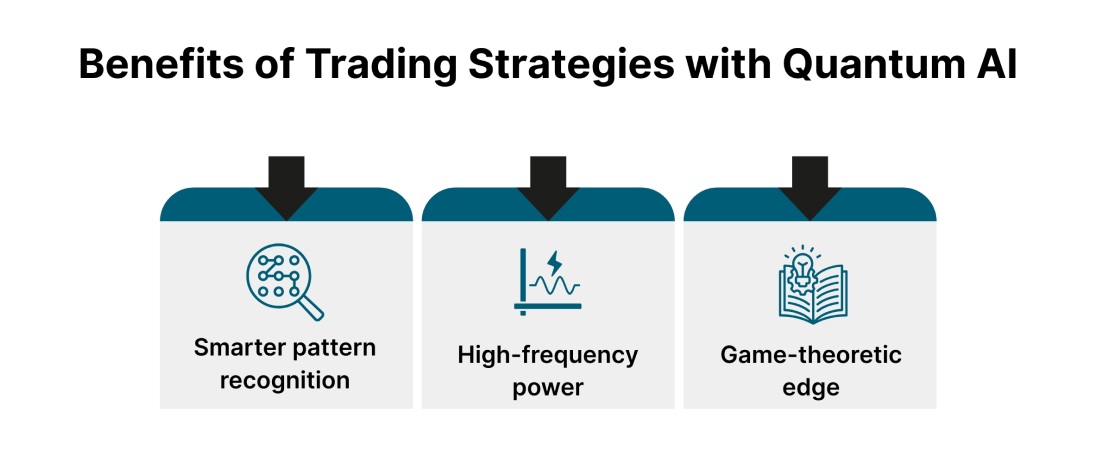
In an industry where microseconds can influence millions, quantum computing in investment banking means more than just speedier calculations; it also means a change in decision-making. Incorporating the principles of quantum mechanics, banks are able to process and interpret complex market variables in a manner not possible in traditional systems. Combined with AI in investment banking, this technology allows the possibility of innovations in forecasting, risk management, and strategic planning, opening a new era of financial innovation.
Speed and accuracy in financial modeling is not an option but a necessity. Quantum computing in investment banking has the capacity to run Monte Carlo simulations, which are important in pricing derivatives and determining risk, without having to use huge sample dimensions.
Recent progress demonstrates that the Quantum Amplitude Estimation (QAE) can radically reduce the necessary set of simulations. The error scales as O(1/e), instead of the classical O(1/e²), meaning a model with 1% accuracy needs 10,000 classical samples but just 100 quantum “shots” today.
Real-world benchmark in 2023-2025 made it even clearer: JPMorgan valued European call options using a quantum processor, and it required 100x fewer quantum shots than a CPU-based Monte Carlo to achieve the same basis-point accuracy.
Here’s what this means:
Portfolio construction and risk evaluation are a few aspects that are being re-modeled in the dynamic world of investment banking with the emergence of quantum computing. Quantum systems can radically transform this process. Using quantum parallelism and interference, they are able to perform calculations over an impossibly vast array of combinations of assets simultaneously, biasing their calculations toward the most optimal results. This ability will directly address the long-term problem of finding the balance between returns and variation with increased speed and greater precision. Conventional methods reach their limits with portfolios whose size and complexity are growing exponentially as more computations are required.
Some hybrid models are already delivering early wins:
Quantum AI is not a buzzword; it is a genuine transition in the way trading strategies develop. Quantum computing, when integrated with AI in investment banking, changes the nature of making major decisions, particularly those that involve high-stakes and time-sensitive activities.
Imagine a trading engine that:

Key benefits include:
Investment banks are keeping a close eye not only on market fluctuations but also on the growing risk that quantum computing could break today’s most widely used security protocols. A Bain Capital Ventures report has cautioned that fault-tolerant quantum computers might break classic encryption, revealing confidential financial information.
Institutions will have to shift to quantum-resistant encryption techniques based on mathematical puzzles that still challenge even quantum computers to strengthen infrastructure. NIST recently released its initial accepted post-quantum cryptography standards (FIPS 203-205), establishing a strong footing for safe transitions.
Key practical moves include:
In a report by Capgemini, 70% of more than 1,000 organizations surveyed are already looking into quantum-safe technology. Two-thirds are concerned about harvest-now, decrypt-later attack, and half of them believe that this security tipping point, frequently referred to as Q-Day, will occur in the next ten years.
Quantum computing is already revolutionizing the way investment banks approach mergers and acquisitions (M&As) and deal structuring. It has made one of the most significant contributions to valuation modeling. Quantum systems offer an elevated degree of accuracy that was previously unattainable with traditional methods by enabling simulations of many market scenarios in a relatively short period. This allows banks to estimate the potential benefits of a deal using faster and more robust estimates, as well as shortening the time-consuming calculations that often slow down the decision-making process.
What quantum can offer to M&A:
As an example, a case in the World Economic Forum, quantum systems were able to map thousands of possible scenarios in a matter of seconds, raising the red flag over vulnerabilities in small-to-medium enterprise portfolios that would have taken classical systems significantly longer to identify.
A study by Goldman Sachs and QC Ware showed that a quantum algorithm on IonQ hardware was able to speed up Monte Carlo simulations, which are common tools in deal pricing and risk modeling, showing real-life potential of faster deal structuring analysis.
Developing knowledge in quantum computing in investment banking is more than a trend; it is essential. In order to develop this workforce, institutions have to consider systematic education, systematic recruitment, and new training techniques.
Current professionals require more than classical skills in finance; they must have a decent understanding of quantum basics and algorithmic minds. A recent quantitative study reveals that the quantum job market remains immature but is already industry-driven and consists mostly of PhD-level positions. Roles are becoming more abundant. LinkedIn data indicates a 180% rise in the number of job titles that include quantum between 2020 and mid-2024. There is a literal urgency.
To meet this challenge, investment banks can:
Quantum computing in investment banking will go from the theoretical to actual benefit in the next decade, allowing analytics to be performed more quickly, more insightfully, and more securely. Combined with AI in investment banking, it provides an innovation toolkit that redefines deal-making, trading, and risk management. Institutions that invest early in skills, infrastructure, and strategy would be in a position to take this technological transformation head-on with confidence.